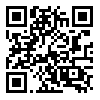BibTeX | RIS | EndNote | Medlars | ProCite | Reference Manager | RefWorks
Send citation to:
URL: http://hakim.tums.ac.ir/article-1-371-en.html
Introduction: Prediction of drug requirements in the earthquake-beaten areas is necessary for crisis management and program planning. Therefore, this study was performed to assess the real need for different drug groups and the most frequently used prescribed drugs for the outpatients in the first 6 months after the Bam earthquake of 2003.
Methods: In this descriptive cross sectional study, data were collected by random selection of 3,000 prescriptions of outpatients who were visited by general practitioners of Emergency Medical Assistance Teams in 12 health care centers during the first 6 months after the Bam earthquake. Data included patients’ sex, number of drugs per prescription, drug categories, drugs’ names (generic or brand), and administration routes. The first 25 drugs with highest use frequency were recorded. Assessment of drug use pattern was done with World Health Organization’s criteria for this purpose.
Results: Males constituted 47.4% and females constituted 52.6% of the patients. Mean number of drugs per prescription was 3.5. Oral administration was the most frequent route (81.7%) followed by injections (10.9%). Respiratory drugs (14.2%) were the most frequently used drug group, followed by analgesics and Non-Steroid Anti-Inflammatory Drugs (NSAIDs) (11.3%), antimicrobials (11.2%), digestive system drugs (9.6%) and central nervous system drugs (7%). Penicillins (6.8%), common cold preparations (8%), and systemic antacids (ranitidine and omeprazole) were the most frequently used drugs.
Conclusion: Respiratory drugs, analgesics, antimicrobials, digestive system drugs and central nervous system drugs were the most frequently used and needed drugs during the first 6 months after the Bam earthquake. These results can be used as a template for prediction of drug needs after the natural disasters.
Hakim Research Journal 2008 10(4): 27 - 33 .
| Rights and permissions | |
 |
This work is licensed under a Creative Commons Attribution-NonCommercial 4.0 International License. |



